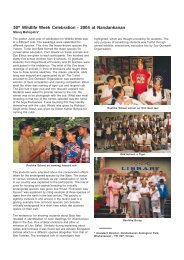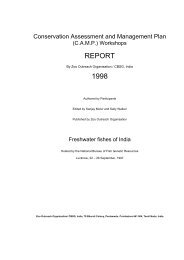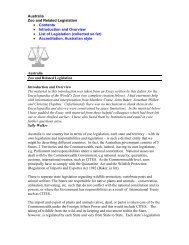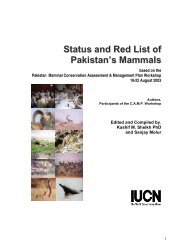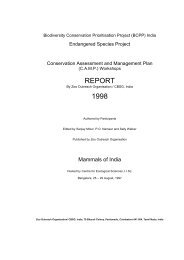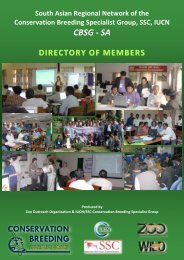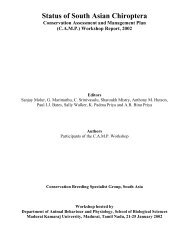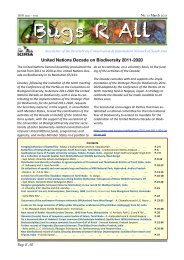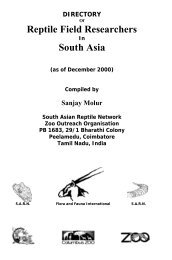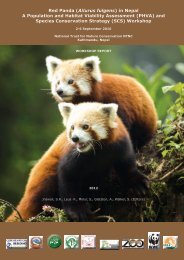BCPP CAMP Amphibian Exec Summ 1998.pdf - Zoo Outreach ...
BCPP CAMP Amphibian Exec Summ 1998.pdf - Zoo Outreach ...
BCPP CAMP Amphibian Exec Summ 1998.pdf - Zoo Outreach ...
Create successful ePaper yourself
Turn your PDF publications into a flip-book with our unique Google optimized e-Paper software.
advance to all known amphibian researchers in India and all other people listed in the invitee list. Along with theBiological Information Sheet was also mailed the <strong>CAMP</strong> Manual to help the respondants in understanding theconcept and objective of the workshop and the IUCN categories. The Biological Information Sheet is a modifiedTaxon Data Sheet that is more self-explanatory and does not require the help of an interpretive manual to befilled. This exercise helped in gathering information from different areas about different taxa before hand and thesheets were also utilised extensively at the workshop by participants for information that was not available withinthe context of the workshop. The sheets therefore provided the means of representation for participants whocould not attend the workshop for some reason.ResultsIndian amphibians, which are about 205 taxa in number have a very high representation of endemics. Nearlysixty-three percent (63%) of the amphibians are endemic to India. Western Ghats is the richest region in India interms of amphibian endemicity. Ninety-three taxa are endemic to this biogeographic region with 2 more taxasharing their distribution with adjacent areas. Northeastern India, which has a very high diversity amongamphibians does not have many endemics within the Indian context because of the jagged political boundary ofthe country. Though restricted in their distribution in this region, locations of many amphibians are found outsideIndia thereby making them Indian political non-endemics. The case is similar in northern and northwestern Indiawith many species ranging across neighbouring countries such as Pakistan, Nepal, Afghanistan and Tibet. Agraph depicting amphibian distribution is given in the main report.Eighty-seven endemic taxa are threatened according to the assessment at the workshop, based on the 1994IUCN Red list categories. The high percentage of endemic taxa being threatened is due to restricted distributionof these taxa along with other man-induced threats to their wellbeing. <strong>Amphibian</strong> studies in India is still at its<strong>Amphibian</strong>s of IndiaIndian Endemics129 (63%)Non-endemics76 (37%)Number of Indian amphibians = 205infancy stage since much more information regarding distribution, population dynamics and threats are required.The reasons for global declines in amphibians due to exessive UV radiation and fungi are yet to be determinedamong amphibians in India. Their decline (if any) due to these factors has not yet been established in India.Threats perceived to Indian amphibians are more physical in nature, such as those by habitat destruction,fragmentation, agricultural practices, pollution, pesticides and other kinds of human interference.Categorisation of taxa was done according to the 1994 IUCN Red Liast categories. For a taxon to bethreatened, any one of the five criteria within the categories has to be satisfied. These criteria or factors that areused in a categorisation of threat are 1. Population reduction; 2. Restricted distribution; 3. Population size; 4.Number of mature individuals and 5 Probability of extinction. The degree of threat depending on each or any ofthese five criteria determines the threat category.One of the major outcomes of this workshop was the post-assessment research and managementrecommendations for every taxon. Participants identified lacunae areas that need prioritisation and this isindicated in the recommendation section. Survey and monitoring are the most frequently recommendedresearch and management tools for understanding distribution and trends of amphibian populations. The4Report of <strong>BCPP</strong> <strong>CAMP</strong> on amphibians of India




